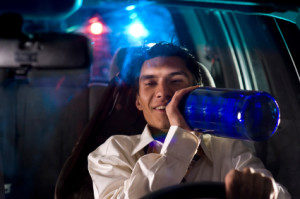Alcohol advertising and marketing have a significant impact on a teenager’s decision to drink, according to the Johns Hopkins Bloomberg School of Public Health. Alcohol advertising influences youth and adult expectations and attitudes, creating an environment that promotes underage drinking as a socially acceptable rite of passage.
Alcohol Advertising Promotes Underage Drinking
There is significant evidence from research studies that alcohol advertisements promote underage drinking. According to a nationwide study published in 2006, increased exposure to alcohol related advertising directly correlates with an increase in underage drinking.

It’s not just exposure to alcohol commercials that increases the likelihood for underage drinking. Middle school students with a higher exposure to alcohol use in movies were more likely to drink underage, according to researchers from Dartmouth Medical School.
The depiction of alcohol in movies is widespread; according to researchers, 92% of contemporary movies depict alcohol use, including 52% of G-rated films.
How Advertising Influences Teens
Research shows that teens are attracted to music, animals, people and humorous stories used in advertisements for alcohol. The three most popular alcohol brands with teenagers all use animal characters as their lead actors in the advertisements.
The latest neuroscience and psychology research suggests that how a teen’s brain develops also plays a role in how and why teens are attracted to certain types of alcohol advertising. Teens are attracted to branded products, like alcohol, that promise immediate gratification, thrills and/or social status.
Between 2001 and 2005, youth exposure to alcohol related advertising on television in the U.S. increased by 41%. Another study of alcohol marketing in magazines from 1997 to 2001 found that the number of beer and distilled spirits ads tended to increase with a magazine’s youth readership. Youth are 96 times more likely to see an ad promoting drinking than one discouraging underage drinking.
Dangers of Underage Drinking
Underage drinking is defined as alcohol use by an individual under the age of 21 years. Alcohol is the most commonly used drug among youth in the United States:
- 33% of 8th graders and 70% of 12th graders have tried alcohol.
- 13% of 8th graders and 40% of 12th graders drank during the past month.
- 90 percent of all alcohol consumed by youths under the age of 21 is in the form of binge drinking.
Youth who start drinking before age 15 are five times more like to develop alcohol dependence than those who begin drinking on or after 21 years. Underage drinkers are also more likely to experience:
- Academic problems, poor or failing grades, and increased absenteeism
- Physical problems, including hangovers and alcohol poisoning
- Sexual health problems, including unprotected sex, unwanted pregnancy and sexual assault
Underage drinkers are also at increased risk for drunk driving, drug abuse, memory-impairment, homicide and suicide.
Talk to Teens About Underage drinking
While alcohol advertising does have a significant impact on underage drinking behavior, parents and friends still play an important role. If you are the parent of a teen and worried that he or she may be drinking alcohol, talk to your teen about the dangers of underage drinking.
